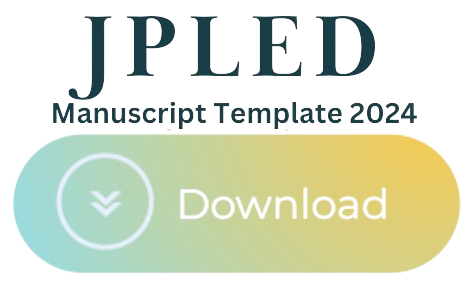Development of Macro Media Flash 8-Based Media to Improve Student Learning Outcomes with the Problem-Based Learning Model in Pancasila Education
.
DOI:
https://doi.org/10.58737/jpled.v5i2.505Keywords:
media, macromedia flash 8, problem based learning, ADDIEAbstract
This research is motivated by the use of IT available in schools has not been optimally used by teachers. Innovative and fun media for students has not been developed and technology-based learning media has not been developed. So teachers need to improve their ability to process technology-based learning media so that students do not get bored. The PBL model has never been used for the use of learning media, especially technology-based media. Based on these problems, this study aims to develop learning media in the form of Macromedia Flash 8 media using the Problem Based Learning (PBL) model in Pancasila Education learning in grade IV of elementary schools that is valid, practical and effective. This type of research is development research (R&D) using the ADDIE model. The ADDIE model consists of five steps, namely: analysis, design, development, implementation, and evaluation. The designed media is then validated by a validator using a validation sheet in the form of a questionnaire. Product validation consists of material experts, media experts and language experts. For product practicality, it is done by filling out a questionnaire of teacher responses and student responses. Then, for effectiveness, it is done by giving evaluation questions to students. The subject of the product trial was at SDN 17 Pasaman, West Pasaman Regency and the subject of product research was at SDN 07 Pasaman, West Pasaman Regency. This type of research is development research (R&D) using the ADDIE model. The ADDIE model consists of five steps, namely: analysis, design, development, implementation, and evaluation. The designed media is then validated by the validator using a validation sheet in the form of a questionnaire. Product validation consists of material experts, media experts, and language experts. For product practicality, it is done by filling out a teacher response questionnaire and student responses. Then, for effectiveness, it is done by giving evaluation questions to students. The subject of the product trial was at SDN 17 Pasaman, West Pasaman Regency and the subject of product research was at SDN 07 Pasaman, West Pasaman Regency. The results of the study showed that the Macromedia Flash 8 media obtained material validity of 95% (very valid), language validity of 70% (quite valid), and media validity of 97.23% (very valid). Based on the results of teacher responses and student responses in the trial school, it is known that learning using Macromedia Flash 8 media is very practical with the percentage of practicality from teacher responses in the trial school being 92.5%, and the percentage of practicality from student responses being 95.72%. The percentage of teacher responses in the research school was 95% and the percentage of student responses was 96.5%. The effectiveness test reached 92% with a very effective category. The conclusion of the study is that Macromedia Flash 8 media with the Problem Based Learning model is proven to be valid, practical, and effective in supporting the learning process of Pancasila Education in grade IV of elementary school.
Downloads
References
Aini, Y. isratul. (2018). Pemanfaatan Macromedia Flash Untuk Pembuatan Media Pembelajaran Bahasa Inggris. Jurnal Teknodik, 123. https://doi.org/10.32550/teknodik.v21i2.258
Ananng Fathoni. (2017). Media dan Pendekatan Pembelajaran di Era Digital (Vol. 01).
Ardianti, R., Sujarwanto, E., & Surahman, E. (2022). Problem-based Learning: Apa dan Bagaimana. Diffraction, 3(1), 27–35. https://doi.org/10.37058/diffraction.v3i1.4416
Caswita, & Noviyani, S. (2023). Peningkatan Kompetensi Guru dalam Pemanfaatan Media Digital Berbasis Canva melalui In-house Training di Sekolah Dasar. Jurnal Teknodik, 27(2), 75–87.
Erawati, D. (2022). Meningkatkan Motivasi dan Hasil Belajar Peserta Didik Melalui Penerapan Model Pembelajaran Problem Based Learning Pada Mata Pelajaran Matematika Kelas 1 SD Negeri 6 Pajar Bulan. SHEs: Conference Series, 5(5), 1086–1093. https://jurnal.uns.ac.id/shes
Fitria, Y. (2019). Mampukah Model Problem Based Learning meningkatkan Prestasi Belajar Sains Mahasiswa Calon Guru Sekolah Dasar? Jurnal Inovasi Pendidikan Dan Pembelajaran Sekolah Dasar, 3(1), 83. https://doi.org/10.24036/jippsd.v3i1.106372
Maritasari, D. B., & Hadi, Y. A. (2018). Pengembangan Multimedia Pembelajaran Menggunakan Macromedia Flash 8 Program Studi Pendidikan Guru Sekolah Dasar (Pgsd) Universitas Hamzanwadi Pada Mata Kuliah Pengelolaan Sumber Belajar. Jurnal DIDIKA: Wahana Ilmiah Pendidikan Dasar, 4(1), 38. https://doi.org/10.29408/didika.v4i1.1159
Maulana Aditia, I., & Dewi Anggraeni, D. (2022). Pendidikan Pancasila: Sebuah Upaya Membangun Karakter bangsa Indonesia Yang Kuat Dengan Berlandaskan Nilai-Nilai Pancasila. Jurnal Kewarganegaraan, 6(1), 1647–1659.
Pratiwi, E. A., Zulhaji, Z., & Hajar, A. (2023). Penerapan Model Problem Based Learning (Pbl) Untuk Meningkatkan Keaktifan Dan Hasil Belajar Siswa. Jurnal Pendidikan Dan Profesi Keguruan, 2(2), 207. https://doi.org/10.59562/progresif.v2i2.30263
Setyaningsih, T., & S, F. (2023). Analisis Pemanfaatan Macromedia Flash 8 sebagai Upaya Pengembangan Media Pembelajaran Tematik Terpadu di Sekolah Dasar. E-Jurnal Inovasi Pembelajaran Sekolah Dasar, 10(3), 361. https://doi.org/10.24036/e-jipsd.v10i3.10458
SHELEMO, A. A. (2023). No Titleیلیب. Nucl. Phys., 13(1), 104–116.
Sugiyono. (2017). Jenis Data Penelitian. Universitas Diponegoro, August, 193.
Yasminah, & Sahono, B. (2020). Application of the Problem-Based Learning Model To Increase Student Participation and Learning Achievement. Diadik: Jurnal Ilmiah Teknologi Pendidikan, 10(1), 167–174.
Downloads
Published
How to Cite
Issue
Section
License
Copyright (c) 2025 M. Haikal Alfarisi Nirya, Rahfi Febryan Putera

This work is licensed under a Creative Commons Attribution-NonCommercial 4.0 International License.
Journal of Practice Learning and Educational Development is licensed under a Creative Commons Attribution 4.0 International License. This permits anyone to copy, redistribute, remix, transmit and adapt the work provided the original work and source is appropriately cited.












